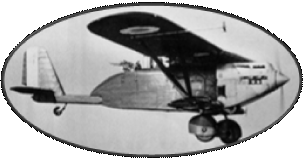At the end of the First World War, the Dutch government drastically reduced military budgets, and the Military Aviation Group saw its resources greatly reduced.
It was not until 1938, when the tension in Europe was growing, that the government was trying to revive the military aviation, but the problems were numerous: the stand-by of the Air Force generated a shortage of pilots and crew members and pilot instructors are lacking.
Modern equipment is faulty, and the variety of equipment poses maintenance problems.
As the war threatened, in July 1939, the Military Aviation Group was renamed Army Aviation Brigade: Luchtvaartbrigade.
In August 1939, the Dutch government mobilized its armed forces, but could only line up 176 combat aircraft divided as follows:
36 Fokker
XXI : Single-engine Fighters
35 Fokker
G1 : Twin-engine Fighters
7 Fokker D.XVII : Biplane Fighters
16 Fokker
T5 : Twin-engine bombers
17 Douglas DB-8A-3N: Light Bombers
20 Fokker CX: Light single-engine bomber
33 Fokker CV: Reconnaissance biplane
20 Koolhoven FK-51 Artillery observation biplane
In May 1940, Germany invaded the Netherlands, and the Luftwaffe destroyed the Dutch Air Force in less than five days. All the bombers were shot down as well as 17 Fighters Fokker D.XXI and GI. Two Fokker D.XXI and eight Fokker GIs are destroyed on the ground, while two other Fokker GIs will be captured by the Germans..
In the absence of available bombs, the Douglas bombers will be used as fighters. But eight of these planes, badly adapted for this role, will be shot down and three will be destroyed on the ground from the beginning of the fighting.
Despite a flagrant inferiority, the Dutch Armed Forces destroyed about 350 German aircraft, whether in air combat, under anti-aircraft or by accident. However, casualties are high, with almost 95% of Dutch pilots lost.










